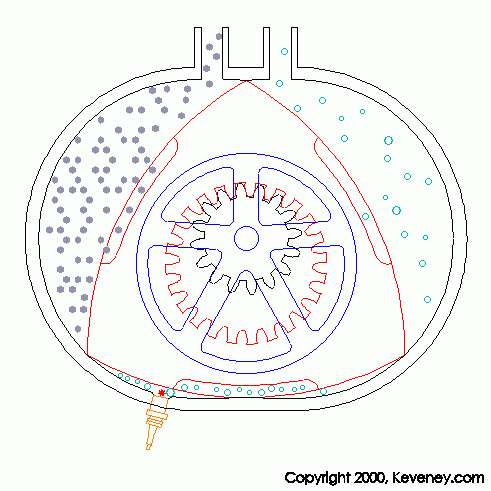|
|
|
| Felix Wankel | NSU Wankel Spider |
The Wankel Rotary Engine:
History in the Making
Felix Wankel, the man that started a revolution was born in Lahr, Germany in 1902. Never able to go to a university or even become have an apprenticeship, Wankel learned the skills he needed to create his engine. It is said that one night in 1924, he had a dream of a "piston-turbine engine that he invented," and he began to do so. During World War II, while imprisoned by Nazis, Wankel developed seals and a rotating assembly for the German air force and naval torpedoes. It wasn't until 1951 that his engine became looked at for automotive purposes, and he began to develop an engine for NSU. In 1957, Wankel had a running prototype of his engine, but it was not until 1959 that the engine made its way into automobiles. The first vehicle to sport Wankel's 498cc single rotor engine was the NSU Wankel Spider. Ever since then, the Wankel has taken the world, and some peoples' hearts, by storm.
|
|
|
| Felix Wankel | NSU Wankel Spider |
How Does it work?

First you'll notice a big spinning triangle type thing, this is the rotor. Being "triangular" it has three faces and three corners, called apexes. Each of these apexes has a seal, aptly named an apex seal. These seals keep the engine working correctly, I will get to that shortly. There are three phases to this engine, and four processes: phase one intake (light blue circles), phase two combustion and compression (orange), and phase three exhaust (grey circles). Combustion and compression make the engine turn. Each rotor face is carrying out one phase of the engine, and each solid metal apex seal prevents these three phases from merging. If an apex seal breaks, the rotor it is on is no longer working correctly, and it will just spin, leaving the other rotor to work.